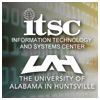The Use of LANCE Imagery Products to Investigate Hazards and Disasters
| Title | The Use of LANCE Imagery Products to Investigate Hazards and Disasters |
| Publication Type | Conference Proceedings |
| Year of Publication | 2011 |
| Authors | Schmaltz, J, Teague, M, Conover, H, Regner, K, Masuoka, E, Vollmer, B, Durbin, P, Murphy, K, Boller, R, Davies, D, Ilavajhala, S, Thompson, C, Bingham, A, Rao, S |
| Conference Name | 2011 Fall Meeting AGU |
| Date Published | 12/2011 |
| Conference Location | San Francisco |
| Keywords | Real-time and responsive information delivery |
| Abstract | The NASA/GSFC Land Atmospheres Near-real time Capability for EOS (LANCE) has endeavored to integrate a variety of products from the Terra, Aqua, and Aura missions to assist in meeting the needs of the applications user community. This community has a need for imagery products to support the investigation of a wide variety of phenomena including hazards and disasters. The Evjafjallajokull eruption, the tsunamis/flood in Japan, and the Gulf of Mexico oil spill are recent examples of applications benefiting from the timely and synoptic view afforded by LANCE data. Working with the instrument science teams and the applications community, LANCE has identified 14 applications categories and the LANCE products that will support their investigation. The categories are: Smoke Plumes, Ash Plumes, Dust Storms, Pollution, Severe Storms, Shipping hazards, Fishery hazards, Land Transportation, Fires, Floods, Drought, Vegetation, Agriculture, and Oil Spills. Forty products from AMSR-E, MODIS, AIRS, and OMI have been identified to support analyses and investigations of these phenomena. In each case multiple products from two or more instruments are available which gives a more complete picture of the evolving hazard or disaster. All Level 2 (L2) products are available within 2.5 hours of observation at the spacecraft and the daily L3 products are updated incrementally as new data become available. LANCE provides user access to imagery using two systems: a Web Mapping Service (WMS) and a Google Earth-based interface known as the State of the Earth (SOTE). The latter has resulted from a partnership between LANCE and the Physical Oceanography Distributed Active Archive Center (PO DAAC). When the user selects one of the 14 categories, the relevant products are established within the WMS (http://lance2.modaps.eosdis.nasa.gov/wms/). For each application, population density data are available for densities in excess of 100 people/sqkm with user-defined opacity. These data are provided by the EOSDIS Socio-Economic Data and Applications Center (SEDAC). Certain users may not want to be constrained by the pre-defined categories and related products and all 40 products may be added as potential overlays. The most recent 10 days of near-real time data are available through the WMS. The SOTE provides an interface to the products grouped in the same fashion as the WMS. The SOTE servers stream imagery and data in the OGC KML format and these feeds can be visualized through the Google Earth browser plug-in. SOTE provides visualization through a virtual globe environment by allowing users to interact with the globe via zooming, rotating, and tilting. |
- Log in to post comments
- Google Scholar




